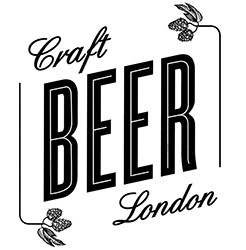John Keeling
has seen the ebb and flow of London’s brewing tradition. First came the ebb: when
Keeling joined Fuller’s in 1981, Courage was about to become the
latest great name to abandon the capital. Some 25 years later, Young’s made their belated, much-lamented departure and left the Chiswick brewer as the
sole survivor of London’s brewing heyday.
Then came
the flow. Of the 30 or so breweries in the city today, only Fuller’s, Meantime and a handful of brewpubs have been around longer than a few years. It’s
a remarkable state of affairs. “I can’t keep track of them,” Keeling admits
with a laugh. “I don’t know how some of
them, like Brodie’s, can keep track of all the beers they produce, either.”
“My job is
more interesting now – this is the best time to be a brewer. Now, rather than
looking at the haze of the beer, the question is: what does it taste like? For
brewers like myself who are interested in flavours, that’s a great thing.”
Keeling is popular
with many of the new brewers: more than one has told me how useful they've found
talking to him at meetings of the London Brewers’ Alliance. The
admiration appears to be mutual.
“I like
drinking in the company of brewers,” he says. “Even with the new wave of
brewers, there’s no ‘our beer is good and your beer is crap’ attitude. It’s
more ‘that’s an interesting beer, how do you do that?’ it’s always like that
with brewers – you only get a more competitive edge when marketing gets
involved.”
Keeling has
plenty of knowledge to impart. He has been part of the brewing world since he
joined Wilson’s Brewery in his native Manchester in 1974. After three years’
there, he moved onto to Heriot-Watt University in Edinburgh before accepting a
job at Fuller’s in 1981. In 1999, he became head brewer.
It’s a role
he relishes, even if the Fuller’s head brewer no longer gets a town-house at the
heart of the complex as part of the job. Walking around Fuller’s part-historic,
part ultra-modern site, he enthuses about the brewery’s tradition. “Microbrewers
can make beers from the past, but a brewery that existed in the past can make
it better,” he says.
You don’t
have to go back to 1893 for a different way of doing things: much has changed
since 1981, Keeling says. Back then, they had two basic recipes. “One mild, one
bitter,” Keeling says. “From the bitter recipe we produced Golden Pride, ESB,
London Pride and Chiswick Bitter. From the mild recipe we produced two other
beers.
“In the
1990s we started creating new recipes: Mr Harry, 1845, we revived London
Porter. Now we’re actively looking at a huge variety of beers. Our autumn
seasonal has been around for 10 years but there’s no demand to get rid of it –
people want something extra as well.
“When the
Hock Cellar [Fullers’ brewery tap, where tours of the complex end] was
originally designed, there was only three hand pumps. We've got six, and we
probably want ten.”
It’s not
just about cask ale. Fuller’s have produced a variety of superb bottled beers
in recent years, from the Vintage range to the Past Masters beers. Then there’s
the Brewer’s Reserve range of barrel-aged beers.
Next, it
seems, is a serious stab at high-quality keg beer. “Keg beer is the next big
thing,” he says. “If you think about it, cask beer is seven per cent of the
beer drunk in Britain. The best beer in Britain is cask beer but the worst beer
in Britain is cask beer too. there’s many places who cannot serve it because
they’ve no idea how to look after it.”
Some of
these places – particularly in central London – serve London Pride. It’s clearly
something that frustrates Keeling. “It does worry me. But if we don’t work with
them, do something with them, they’re never going to have cask beer. But now
we’ve got an opportunity to sell them keg beer that is equally as interesting.
“The thing
you have to learn is that keg is a different environment to cask – just as you
have to design a beer for cask, you have to design it for keg. I have no truck
with people who say keg beer is rubbish, or people who say cask beer is
rubbish. If you say cask beer is rubbish you simply haven’t drunk any good cask beer – the same with keg.”
It’s a move
that will bring Fuller’s into line with the likes of Meantime and Camden Town,
whose keg fonts are increasingly common across the city. More and more of London’s new beer fans expect
to find good beer on keg as well as cask; Keeling is well aware that any new
Fuller’s product must be of the highest quality. “Craft beer is bringing new
drinkers in, and they’re coming in with a relatively open mind,” he says. “They’re
quite happy to appreciate cask, can, bottles, keg.
“I do think there’s a load of lager drinkers who are searching for an interesting flavour but can’t find it because it doesn't exist in their environment. Now Meantime are trying to fulfil that need, so are Camden.
"I think Fuller’s can enter that market. But we
won’t put cask London Pride in a keg. It won’t be very good, it would be
underselling us and them. It would be perfectly possible to develop a London
Pride that is very good in keg but there’s nothing wrong with developing
entirely new beers that are designed especially for keg.”






Golly, at this rate London will soon have as many breweries as Cumbria. Some way behind Yorkshire of course.
ReplyDelete